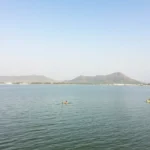Tips for Visiting Petra Successfully

- 1. Discovering Petra: A Journey Through History
- 2. Essential Attractions in Petra
- 3. Experiencing Petra by Night
- 4. Scenic Overlooks of the Treasury
- 5. Exploring the Trails of Petra
- 6. Getting Around Petra
- 7. Planning Your Visit: One or Two Days in Petra
- 8. Accommodations Near Petra
- 9. Interactive Map of Petra
Petra, the jewel of Jordan, is a destination that captivates the imagination of travelers worldwide. This ancient city, carved into rose-red cliffs, offers an unparalleled blend of history, architecture, and natural beauty. Whether you're an avid explorer or a casual tourist, understanding how to navigate this UNESCO World Heritage site will enhance your experience. In this comprehensive guide, we will delve into the history, must-see attractions, practical tips, and everything else you need to make the most of your visit to Petra.
Prepare your explorer's hat, apply some sunscreen, and get ready for an adventure of a lifetime!
1. Discovering Petra: A Journey Through History
To truly appreciate Petra, one must first understand its rich history. This remarkable site was not merely a façade; it was once a thriving city of the Nabateans, established as early as the 6th century BC. As a hub for trade routes connecting the East and West, it flourished under the influence of various cultures, including the Romans and Byzantines, before fading into obscurity.
The Nabateans: Masters of Trade and Water Management
The Nabateans were a nomadic Bedouin tribe that transformed Petra into a bustling metropolis. Their strategic location, nestled within mountains and narrow gorges, provided both protection and access to vital water sources. This allowed them to develop a sophisticated trade network, exporting goods like silk and spices.
The Rediscovery of Petra
After centuries of abandonment, Petra was brought back to life in 1812 by Swiss explorer Johann Ludwig Burckhardt. His discovery marked a significant moment in archaeological history, revealing a city that had been hidden for ages, complete with intricate rock-cut architecture and elaborate tombs.
2. Essential Attractions in Petra
While the iconic Treasury (Al-Khazneh) is often the focal point of Petra, the site is home to a myriad of other fascinating attractions. A comprehensive visit will allow you to explore the diverse ruins scattered across several valleys.
Key Sites to Visit in Petra:
- Siq: A breathtaking 1.2 km gorge leading to the Treasury, adorned with ancient water channels and fascinating rock formations.
- The Treasury (Al-Khazneh): A monumental facade carved into the rock, measuring 40 by 28 meters, known for its stunning detail and grandeur.
- Nabatean Theatre: A unique amphitheater that could hold up to 4,000 spectators, showcasing Nabatean architectural ingenuity.
- Royal Tombs: A collection of grand tombs, including the famous Urn Tomb, showcasing the artistic prowess of the Nabateans.
- High Place of Sacrifice: A sacred site with exceptional views, where ancient rituals took place amidst stunning vistas.
- Great Temple: A large complex believed to have served as a public gathering space, reflecting the architectural development of the Nabateans.
- Byzantine Church: A 5th-century structure known for its impressive mosaics, offering a glimpse into the region's religious history.
3. Experiencing Petra by Night
One of the unique highlights of visiting Petra is the "Petra by Night" experience. This enchanting event features the Siq and the Treasury illuminated by thousands of candles, creating a magical atmosphere enhanced by traditional music.
Details About the Event:
This spectacle occurs three nights a week (Monday, Wednesday, and Thursday) and lasts from 8:30 PM to 10:30 PM. Tickets, which cost 17 JOD, must be purchased on the day of the event at the Visitor Center. While many visitors find it enchanting, some note that the crowds can detract from the experience.
4. Scenic Overlooks of the Treasury
The mountainous terrain around Petra offers numerous viewpoints that provide breathtaking vistas of the Treasury. Here are some of the most sought-after overlooks:
Popular Viewpoints to Explore:
- Mirador Al-Khubtha: A challenging but rewarding 3.5 km trail that leads to one of the best panoramic views of the Treasury.
- Mirador 1: Easily accessed by a short climb, providing a stunning view just moments from the Siq.
- Mirador 2: Located on the opposite side, this viewpoint offers a different perspective, but requires careful navigation.
- Mirador 3: For the adventurous, this trail leads to a higher viewpoint, but be prepared for a longer trek.
Safety Considerations at the Viewpoints
While many of these viewpoints are free, they lack safety features like railings or signs. Visitors are advised to exercise caution and to negotiate any assistance from local guides beforehand.
5. Exploring the Trails of Petra
Petra is best explored on foot, with several well-marked trails leading to stunning overlooks and lesser-known areas. Here are some trails worth considering:
Notable Trails in Petra:
- Al-Khubtha Trail: 3.5 km leading to a spectacular view of the Treasury.
- High Place of Sacrifice Trail: A 3 km route that offers archaeological sites and a beautiful sunset view.
- Monastery Trail: A challenging 2.5 km hike with 800 steps leading to the breathtaking Monastery.
- Backdoor Trail: A gentler route to the Monastery, offering beautiful scenery and relaxation.
6. Getting Around Petra
Walking is the most effective way to discover Petra, as the site is extensive and best experienced at a leisurely pace. However, there are other options for those with mobility concerns.
Transportation Options:
A shuttle service offers rides from the Visitor Center to the Treasury, making it accessible for visitors with limited mobility. The cost is approximately 25 JOD round trip.
While it may be tempting to ride the available horses and camels, be aware of the potential for animal mistreatment and consider walking instead.
7. Planning Your Visit: One or Two Days in Petra
To truly appreciate the breadth of Petra, it is advisable to spend at least two days exploring the site. Here’s a suggested itinerary:
Two-Day Exploration Plan:
- Day 1: Enter via the backdoor to visit the Monastery, enjoy the views, and traverse the main valley to the Treasury by sunset.
- Day 2: Start early at the Treasury, then explore the Royal Tombs and the High Place of Sacrifice, ensuring to visit other significant monuments along the way.
If you only have one day, prioritize visiting the Monastery and the Treasury. Be prepared for a long day, covering approximately 15 km.
8. Accommodations Near Petra
Wadi Musa is the closest town for accommodations, located just a short distance from the Visitor Center. It’s essential to consider transportation options, especially if you plan to walk back after a long day of exploring.
Recommended Hotels:
- Nomads Hotel Petra: Cozy and clean with a lovely terrace for sunset views.
- Over Mountains Hotel: A comfortable option with great amenities.
- Petra Guests Hotel: Offers a budget-friendly stay near the entrance.
- Petra Moon Luxury Hotel: Ideal for those wanting proximity to the Visitor Center.
9. Interactive Map of Petra
Before your visit, check out a detailed map that outlines all significant points of interest in Petra. This will help you plan your route and ensure you don’t miss any hidden gems.
Here are some essential tips for a smooth visit:
- Consider purchasing the Jordan Pass, which provides access to major attractions, including Petra.
- Bring cash, as some vendors do not accept cards. An ATM is available at the Visitor Center.
- Stay hydrated and wear comfortable clothing and footwear, as you'll be doing a lot of walking.
- Arrive early to beat the crowds, especially during peak tourist seasons.
For a comprehensive exploration of Petra, immerse yourself in its history, marvel at its breathtaking architecture, and embrace the adventure that awaits you in this ancient wonder of the world.
As you prepare for your journey, consider checking out this informative video for more tips on visiting Petra:





Deja una respuesta